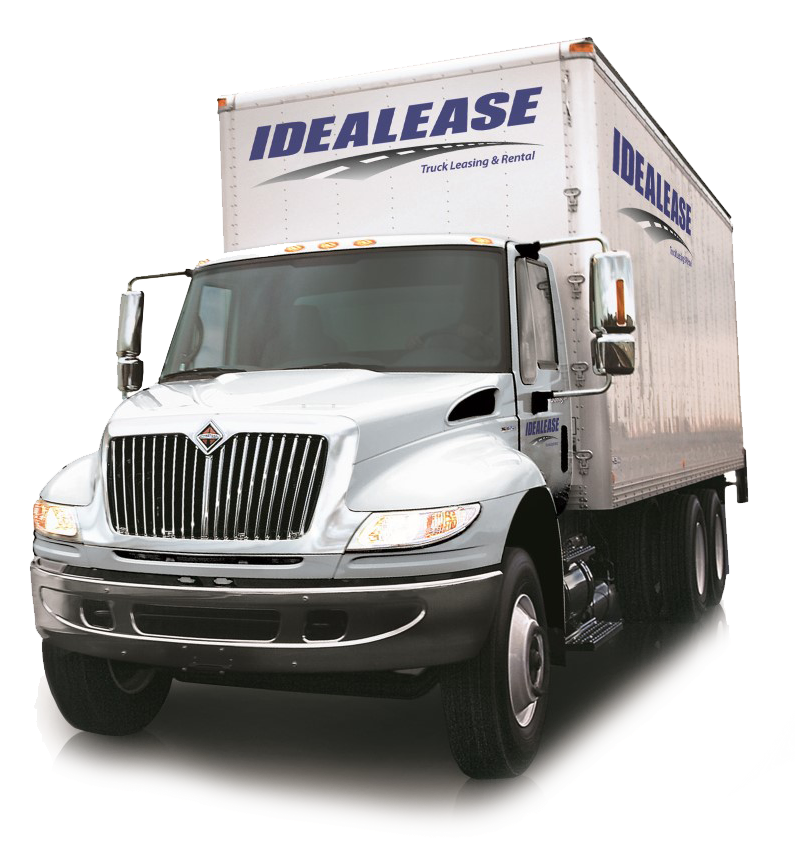Hypertension and Drivers
Read the latest Idealease safety bulletin below or access the entire bulletin here. Remember to sign up for the weekly bulletin and receive it directly in your inbox! Stay informed on the latest safety news, tips, and information! Need a PDF version to download and share?
In This Issue:
- Your Drivers and Hypertension
- What Can You Do to Help Control Hypertension?
- Making Healthy Choices on the Road
- FMCSA definition for “Tank Vehicle” for Tank Endorsement for CDL
Driver Health
Question: I have sent my driver for a DOT physical and the doctor has issued a three-month certification due to the blood pressure (hypertension) of my driver. Can my driver continue to be qualified by seeing the physician every three months and receiving a new medical certificate?
Answer: NO! The three-month certification for hypertension is a one-time certification. Hypertension, as defined by the regulations, is classified into three stages depending on the systolic and or diastolic blood pressure readings taken by the driver.
-Stage #1 (systolic 159-140 and or diastolic 99-90): A driver with this condition may be certified for one year. Upon re-certification, if the driver’s blood pressure is equal to or less than 140/90 could they again be certified for one year? However, if the driver’s blood pressure is greater than 140/90 and less than 160/100 at the time of re-certification, the driver is issued a one-time three-month certificate.
-Stage #2 (systolic 179-160 and or diastolic 109-100): A driver with this condition must be treated and given a one-time, three-month certificate. Once the driver has reduced the blood pressure to 140/90 or less, a one-year certificate is then issued and recertified annually.
-Stage #3 (systolic equal to or greater than 180 and or diastolic equal to or greater than 110): A driver with this condition cannot be certified until their blood pressure has been reduced to 140/90 or less. The driver is then recertified every six months.
*It should be noted that once a driver has been diagnosed with hypertension, the re-certification for Stage 1 and Stage 2 will continue to occur annually and the recertification for Stage 3 will occur every six months. The regulations, as outlined in 391.43, specifically state that if a driver has hypertension and/or is being medicated for hypertension, he or she should be recertified more frequently.
What Can You Do to Help Control Hypertension?
- Eat healthy foods. Try the dietary approach to control hypertension. Eat fruits, vegetables, whole grains, and low-fat dairy foods. Get plenty of potassium. Eat less saturated fat, trans fat and total fat. Limit the amount of sodium (salt) in your diet.
- Maintain a healthy weight. If you are overweight, losing even 5 pounds can lower your blood pressure.
- Increase physical activity. Strive for at least 30 minutes of physical activity a day.
- Limit Alcohol. Even if you are healthy, alcohol can raise your blood pressure. Drink in moderation; it is suggested no more than one drink a day for women and two a day for men.
- Do not Smoke. Tobacco injures blood vessel walls and speeds up the process of hardening the arteries. If you smoke, get help. Ask your doctor to help you quit!
- Manage your stress. Reduce stress as much as possible. Practice healthy coping techniques, such as muscle relaxation and deep breathing. Get plenty of sleep!
Making Healthy Choices on the Road
As a driver of a commercial motor vehicle, it is hard to eat healthily and stay active. The job often requires individuals to stay sitting for extended periods. It is easy to reach out for fast food options, below are some tips on choosing healthier alternatives when eating fast food.
Try selecting from the following:
- The smallest sized hamburger
- Grilled chicken sandwiches or salads
- Low-fat dressings and sauces (or none)
- Diet soft drinks or preferably, water
Try to avoid the following:
- Super-sized ANYTHING
- Fried or breaded chicken or fish; as well as chicken nuggets
- High-fat dressings and sauces
- Extra/ sides of cheese
Reducing Blood Pressure & Hypertension
The human body is designed to move. The heart is just one of the muscles that move blood around the body, and the heart depends on bodily movement to pump blood through the body. In other words, when you move your body, you help your heart do its job. As a commercial driver, your job is getting deliveries from point A to point B as quickly as possible. You sit for hours on end with no movement. This forces your heart to do all the work to pump all the blood, overworking and straining your heart.
So, what’s the big secret to reducing blood pressure and staying out of hypertension? Move!
Movement improves blood flow and helps to reduce blood pressure. Move any way you can, any time you can!
- Be conscious of sitting still for hours while you are driving. Find ways to make even small movements in your feet, legs, hands, arms, shoulders, and neck. The secret is in moving frequently.
- Find ways to be active outside the truck. Ten-minute activity periods, four or five times a day will go a long way to reduce blood pressure and maintain your DOT medical card at two-year intervals.
- When loading or unloading seems to be taking too long, take that time to move, stretch, and walk.
- Park at the far end of the rest stop, and walk the long way around, to get into the building.
- Do not always eat at the truck stop. Walk to a nearby restaurant to eat. Walk to a nearby grocery store and buy some healthy food to eat on the road.
- Step in and out of your truck 10 times after stopping for a meal. Or walk around your truck 10 times. Every extra step helps!
- Walk around the parking lot, up and down the rows, and find the nicest-looking customized truck.
- Regular physical activity is one of the best things you can do for your heart. A healthy heart helps keep blood pressure low. Regular physical activity also helps control your weight and reduce stress. Any regular exercise like walking or biking, even 15 minutes a day will do wonders for your health.
FMCSA definition for “Tank Vehicle” for Tank Endorsement for CDL
Do you realize this NON-CDL truck could require the driver to have CDL with Tank endorsement to drive?

Tank vehicle means any commercial motor vehicle that is designed to transport any liquid or gaseous materials within a tank or tanks having an individual rated capacity of more than 119 gallons and an aggregate rated capacity of 1,000 gallons or more that is either permanently or temporarily attached to the vehicle or the chassis. A commercial motor vehicle transporting an empty storage container tank, not designed for transportation, with a rated capacity of 1,000 gallons or more that is temporarily attached to a flatbed trailer is not considered a tank vehicle.
Four of these 275-gallon IBC totes filled with liquid or gaseous materials would require the driver of the NON-CDL unit now to have a CDL with a tank vehicle endorsement as the totes exceed the 119-gallon tank definition and the aggregate capacity exceeds 1,000 gallons.
Brake Safety Week
August 21-27, 2022
Brake Safety Week is held annually to ensure commercial motor vehicle brake safety inspection, enforcement, and education initiative. Brake Safety Week is conducted by law enforcement jurisdictions in Canada, Mexico, and the U.S. Inspectors will conduct their usual North American Standard Level I and V Inspections and capture and report brake-related data to CVSA. The results will be released in the fall.
View last year’s Brake Safety Week results.

NHTSA Issues Final Rule Upgrading Rear Underride Standards for Trailers & Semitrailers
The National Highway Traffic Safety Administration has issued a final rule that upgrades two Federal Motor Vehicle Safety Standards in an attempt to improve protection for drivers and passengers in light vehicles in a rear underride crash. The rule amends Federal Motor Vehicle Safety Standard (FMVSS) No. 223, “Rear impact guards,” and FMVSS No. 224, “Rear impact protection.”
The new rules, which will affect newly manufactured trailers and semitrailers of 10,000 pounds GVW or more, requires rear underride guards to protect occupants of light vehicles in crashes up to 35 mph. The current standard is 30 mph.
The new standard will be mandated for vehicles manufactured two years after the final rule is published in the Federal Register. There is no retrofit requirement. NHTSA estimates that 94 percent of new trailers sold in the United States subject to FMVSS Nos. 223 and 224 already comply with the requirements of this final rule.
In addition, NHTSA is implementing several other underride provisions of the 2021 Bipartisan Infrastructure Law, including:
- Establishing a Federal advisory committee on underride protection, which will complete research on side underride guards for trailers and semi-trailers to assess their effectiveness, feasibility, benefits, costs, and impact on intermodal operations. The agency has published a request for nominees to serve on the advisory committee.
- Planning to publish an advance notice of proposed rulemaking to consider requirements for side underride guards for crashes into the sides of trailers and semi-trailers. This rulemaking also responds to a provision in the Bipartisan Infrastructure Law to report the findings of research on side underride guards in a Federal Register notice to seek public comment.
- Improving data collection of underride crashes by recommending the inclusion of underride data in State crash data systems and by providing educational materials to State and local police departments on identifying and recording underride crashes; and
- Researching rear impact guard designs that better protect occupants of passenger vehicles in even more rear underride crash scenarios.
*The Idealease Safety Bulletin is provided for Idealease locations and their customers and is not to be construed as a complete or exhaustive source of compliance or safety information. The Idealease Safety Bulletin is advisory in nature and does not warrant, guarantee, or otherwise certify compliance with laws, regulations, requirements, or guidelines of any local, state, or Federal agency and/or governing body, or industry standards.
